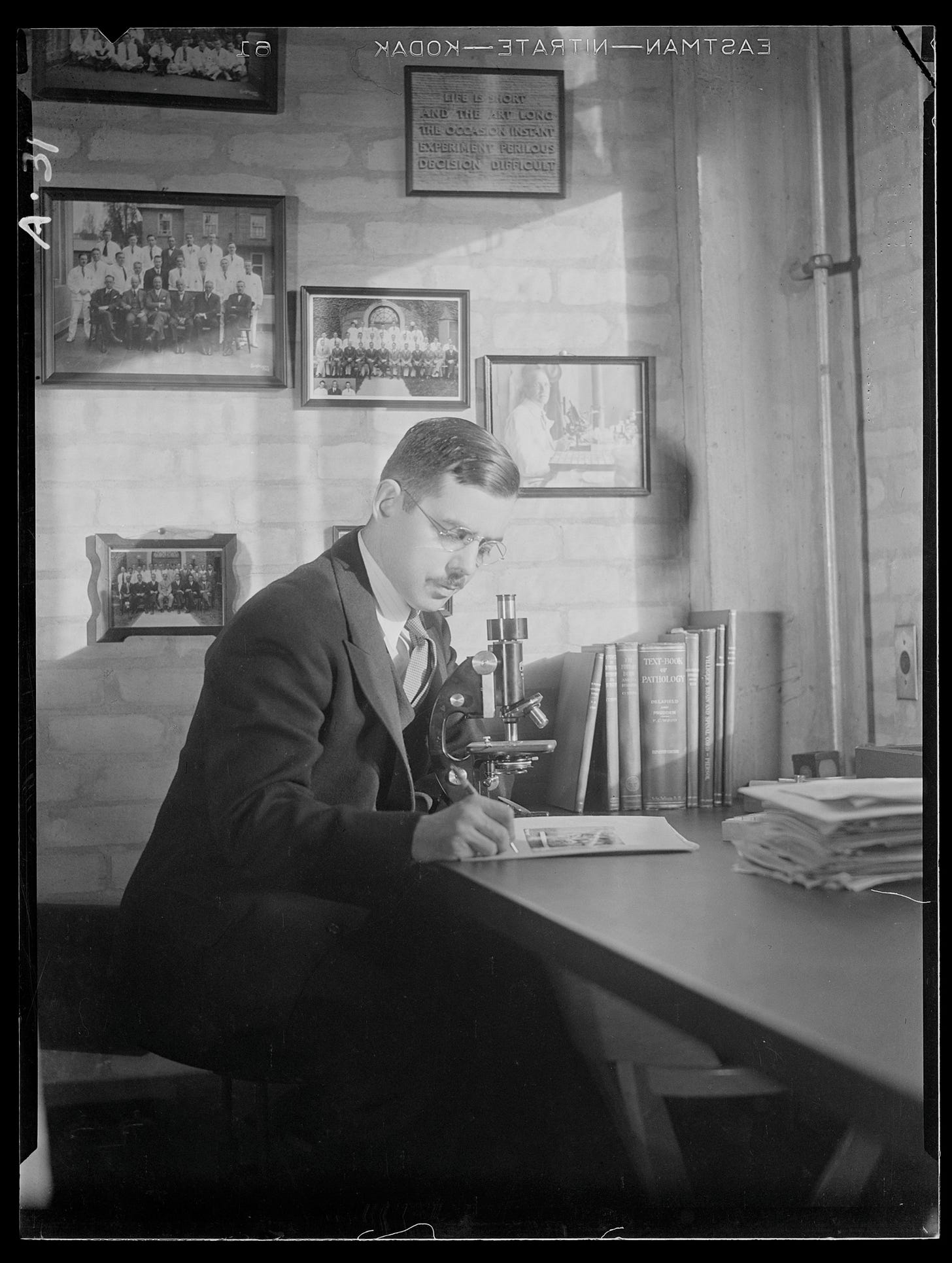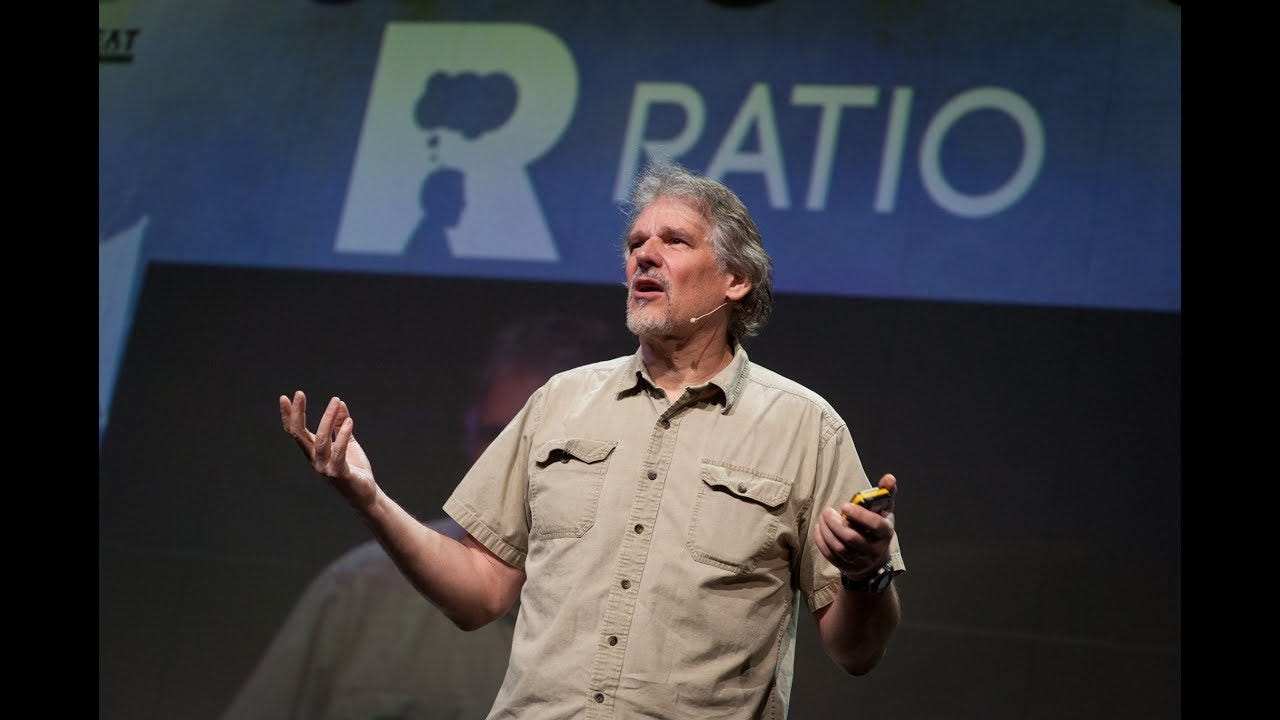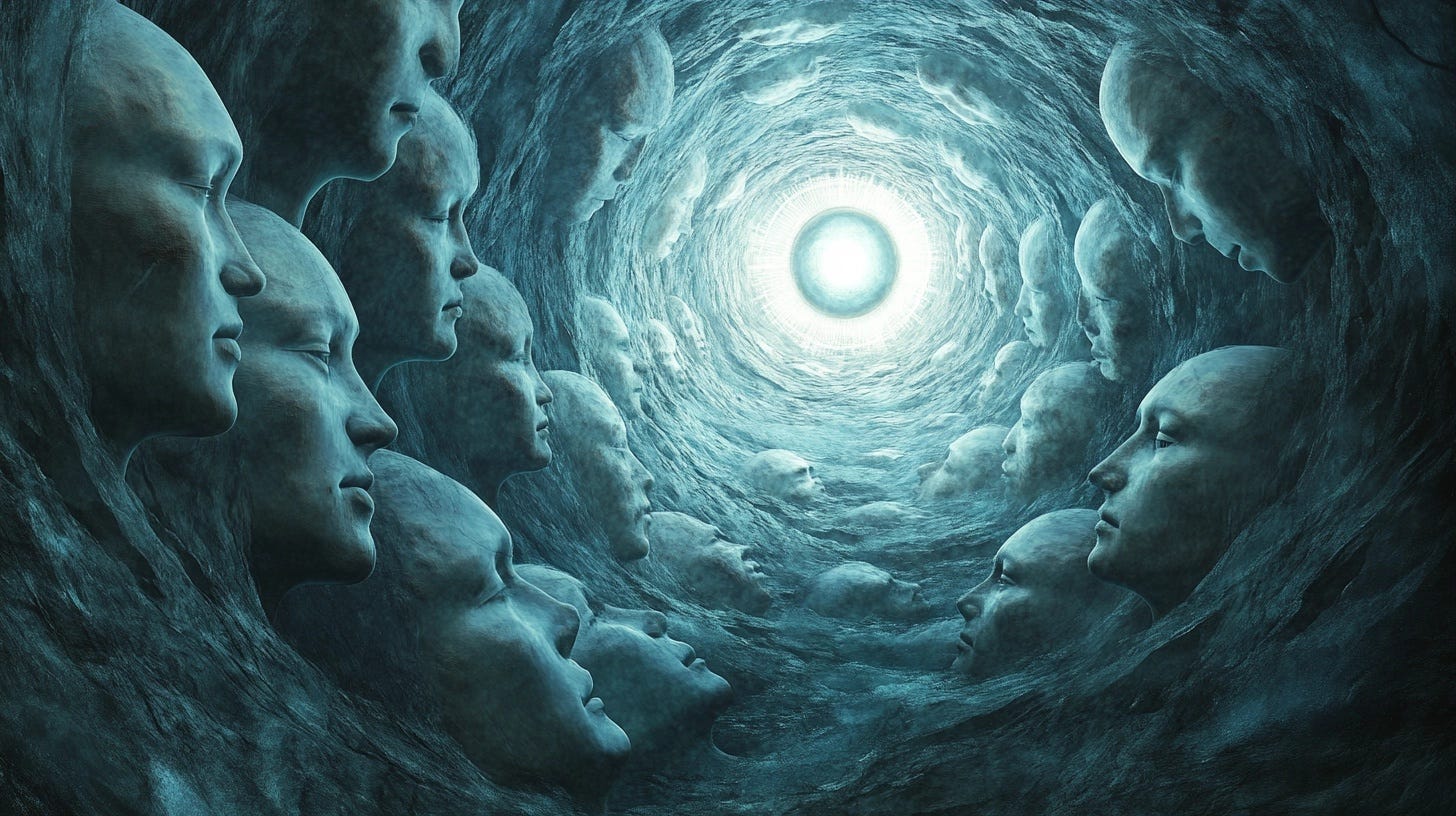Can Musk's Neuralink Destroy What Makes Us Human?
A wild theory about the future of consciousness
It took almost a decade but Elon Musk’s Neuralink have finally begun implanting their Brain-Computer Interfaces into human subjects. So it seems like a good time to talk about the looming existential risk posed by such devices. The entire future of human life hangs on a five-word hypothesis uttered by a man called Peter Watts in 2018. If he’s right then Neuralink and other Brain-Computer Interfaces have the potential to obliterate human consciousness as we know it. Five words:
“consciousness doesn’t multiply; it expands”1
Back in 2018, Neuralink was still very new and very theoretical. Today we are right at the cusp of the Transhumanist Age. We are right at the point where brain and machine begin to merge. And if Watts is right, then things are about to get very weird.
Peter Watts is a zoology PhD turned hard science-fiction writer whose 2006 book Blindsight won him a cult following among neuroscientists. The reason: Blindsight explored the idea that consciousness is a parasite contributing nothing to its host. Apparently this idea resonated with neuroscientists puzzled by consciousness. As we’ll see it’s helpful to have neuroscientist friends when trying to figure out the impact of technology on the mind.
In his talk titled Conscious Ants and Human Hives Watts argues that if these Brain-Computer Interfaces work exactly as they’re meant to then each of our individual consciousness will dissolve into a single giant super-consciousness. Note that this isn’t if they go wrong but if they work exactly as they’re supposed to.
This whole story hinges on a small nugget of flesh in your brain. This nugget is called the corpus callosum and it is the bridge connecting the two hemispheres of the brain. It’s a congested road between two metropolises. And as it turns out you can live without it.
Van Wagenen

This is what we discovered in the middle of the 20th century. Way back in 1939 when things were beginning to get really nasty in Europe William van Wagenen experimented with a radical new treatment for severe epilepsy in upstate New York. Van Wagenen got the idea from observations of epileptics who developed cancer in their corpus callosum. In the early stages, their seizures continued as normal but once the tumour got bigger the seizures stopped.
And not only that but there didn’t seem to be an impact on their consciousness either. In his 1940 paper Van Wagenen noted that consciousness wasn’t lost in these subjects when the seizure was limited to one hemisphere:
“as the corpus callosum was destroyed, generalized convulsive seizures became less frequent … as a rule, consciousness is not lost when the spread of the epileptic wave is not great or when it is limited to one cerebral cortex.”2
And so at the University of Rochester, von Wagenen undertook a novel procedure on 10 patients between the ages of 10 and 43 — he cut open their skulls and burned their corpus callosums into oblivion thus severing their two hemispheres from each other. In total, there were 26 patients and they went on to become one of the most legendary cohorts in the history of science: the split-brain subjects.
Of the original 10, seven experienced less frequent or less severe seizures. University of Rochester psychiatrist A. J. Akelaitis studied the patients testing IQ and examining behaviour and found that they had the same level of cognitive ability and showed no behavioural or personality changes.
Roger Sperry thought otherwise. Sperry pioneered the field of split-brain research and a couple of decades later he won the Nobel Prize for this work in 1981. He suspected suspected that Akelaitis had tested only one hemisphere which is why he hadn’t noticed anything amiss. But Sperry’s studies of split-brain cats and monkeys told him the two hemispheres operated independently. The Rochester patients were referred to Sperry and with that, the golden age of split-brain studies began.
The decades of research that ensued have radically altered our understanding of what we are and of consciousness itself and have given us some of the most bizarre stories in the history of science.
In contrast to what the University of Rochester psychiatrist observed, the lives of split-brain patients in the months after surgery are more like Fight Club than full health. Images of conflict between the left and right hands were common:
“When one split-brain patient dressed himself, he sometimes pulled his pants up with one hand (that side of his brain wanted to get dressed) and down with the other (this side did not). He also reported to have grabbed his wife with his left hand and shaken her violently, at which point his right hand came to her aid and grabbed the aggressive left hand.”3
“In the first months after her surgery, shopping for groceries was infuriating. Standing in the supermarket aisle, Vicki would look at an item on the shelf and know that she wanted to place it in her trolley — but she couldn't. “I'd reach with my right for the thing I wanted, but the left would come in and they'd kind of fight,” she says. “Almost like repelling magnets.” Picking out food for the week was a two-, sometimes three-hour ordeal. Getting dressed posed a similar challenge: Vicki couldn't reconcile what she wanted to put on with what her hands were doing. Sometimes she ended up wearing three outfits at once. “I'd have to dump all the clothes on the bed, catch my breath and start again.””4
This physical struggle was emblematic of a deeper divide. In splitting the hemispheres it wasn’t just the body that was divided but consciousness itself. Where once there was one, now there were two.
Legendary neuroscientist V.S. Ramachandran talks about a split-brain case in which the hemispheres diverged enough that one side was an avowed atheist and the other a devout Christian. In the absence of the corpus callosum, the mind decohered into minds. Instead of a single self, we are left with selves — each with their own sets of skills — that are often in competition with each other. Neuralink works in the exact opposite direction.
Watts’s Argument
There are a million different threads to follow in this research — each one unravelling everything we know about the mind. Split-brain research has changed the way philosophers and scientists think about consciousness, the nature of the self and free will.
The thread Peter Watts follows is the corpus callosum. And the argument he makes is, as we’ve noted that
“consciousness doesn’t multiply it expands”.
In following up the corpus callosum thread, Watts contacted one of his new neuroscience friends to try and figure out the speed of communication between the hemispheres through the corpus callosum. After some back-of-the-envelope calculations, the neuroscientist determined that the speed — or in silicon terms bandwidth — wasn’t much different to a smartphone in 2018.
The corpus callosum connection between the two hemispheres then is high-speed and low latency — like terabit broadband. It enables near-instantaneous communication between the hemispheres.
When this is severed, it’s not like there’s no connection between the hemispheres (after all they are still connected at the brain stem). But, where the corpus callosum was a superfast broadband connection, the lower brain connection is more like dial-up internet.
And this is where we reach the crux of Watts's caution with Neuralink.
Somewhere between this dial-up speed of the brain stem and the broadband speed of the corpus callosum, we hit what is called a “critical point”. A critical point is a term from the physical sciences for the point at which a system undergoes a sudden, qualitative change in its properties or behaviour.
There is no qualitative difference between water at 5ºC, water at 98ºC and water at 99ºC. But when it crosses the threshold between 99ºC and 100ºC, it transforms. A mere 1ºC change makes 101ºC water a different animal. It crosses a threshold, hits a critical point and undergoes a qualitative transformation. The same goes for water at 0ºC when it becomes ice.
In the belly of the sun, something more extreme happens. The ordinarily repulsive forces of atoms are overcome. The heat and pressure of the solar belly crosses the critical point and the repulsive forces of atoms are broken through leading to a massive explosive release of energy which has given life to everything on our planet.
Watts’s argument is that consciousness, like these other natural phenomena, has a critical point. In the case of consciousness that critical point isn’t to do temperature or pressure but speed and bandwidth.
And so somewhere between the bandwidth of the lower brain’s dial-up connection and the corpus callosum’s broadband connection, there is a critical point. At that critical point, the individual consciousnesses of the hemispheres cross a threshold and like atoms in the furnace of the sun’s core, they merge and something new is formed. In the sun, two hydrogens become one helium; in the brain two I’s become one greater I. No left-hemisphere atheist and right-hemisphere Christian just a slightly larger consciousness going about its daily business doomscrolling and businessing. In other words,
”Consciousness doesn’t multiply; it expands.
The age of BCIs
And that brings us to the present moment and scenes like the above. This is Neuralink’s first human test subject Noland Arbaugh playing chess with his mind. Things didn’t go smoothly with this first operation with only 15% of the electrodes in his brain staying in place. But it’s enough to be life-changing for the quadriplegic who describes it as being like “using the force”.
The second operation with the test subject Alex seems to be going better with much better function. He’s playing Counter-Strike now without any joysticks or buttons just all using his mind.
In the next few years, these human trials are going to gain momentum and this technology is going to mature. While it’s still a long way to go from motor control like these first subjects to the telepathy that Musk spoke about on Joe Rogan:
“You wouldn’t need to talk”5
The future is coming. And as we approach that day Watts’s prediction is going to be put to the test. If we can get to the point where communication is so quick that you wouldn’t need to talk, will we even have multiple individual consciousnesses to speak to?
When the bandwidth connecting me to you increases in speed from the slowness of thinking then speaking or texting or however we communicate — when we cut out the middle man of language might we not then expect the boundaries between us to dissolve? Will we not become like two conscious hemispheres pooled together into one thanks to the bandwidth of the corpus callosum? If consciousness does have a critical point then when is Neuralink going to take us past it?
What Will A Super-Consciousness Look Like?
I’ve been trying to imagine what this super-consciousness would look like. Would it be hell or would it be amazing? What follows are my musings but I’m sure many of you will notice elements that I’m missing and I’d love to hear them. I’m also curious about how many people find this possible future appealing — who would love to be part of a collective vs. being an isolated consciousness?
The thing is, it’s a hard thing to wrap your head around. It’s absurd to think of a consciousness having multiple bodies. How can you be conscious and have a billion bodies? But then again I am conscious and I have trillions of cells. I don’t worry about the day-to-day management of protein synthesis. I don’t worry about regulating my heartbeat or the CO2 in my blood. I don’t spend long hours in creative work coming up with my dreams or the characters in them. So much of the organism that I am is done without any conscious oversight.
My ability to control these cells and systems from a top-down command centre is for the most part illusory. I can control my breathing. I can go to the gym and the sauna. I can hold my breath. I can eat a more nutritious diet. I can spend a few months at Everest Base Camp. All of these things I can do and influence the workings of these systems but it is less like wilful control and more like systematic puppeteering. I am tilting the floor of my organism. If I’m not careful then I’ll be too hungry and I’ll fail in the diet or I’ll avoid the gym or the sauna or get lost in my thoughts and lose focus on the breath. There’s a delicate balance as a conscious agent of two hemispheres and 36 trillion cells.
So is it really such a big deal to speak of a consciousness operating at the level of a billion humans? Is this not just the next organic evolution in consciousness? A consciousness which can draw on not just two hemispheres but billions.
How would that look at the level of a transhumanist super-consciousness? Will my consciousness — my sense of interiority — really disappear and be dissolved in the infinitely bigger super-consciousness? Then what would my life look like day to day? Would there be no interiority? Obviously this shouldn’t sound strange to me since I’m not surprised to think that my individual hemispheres don’t have consciousness while I’m online. So why does it seem weird to imagine myself as just a cell in a transhuman body?
My mind immediately goes to sci-fi and I think about a war between those who join the super-consciousness and those who don’t. Would taking down a single body in the super-consciousness be easy? Or no? I guess I’m thinking about the Will Smith movie adaptation of Isaac Asimov’s I-Robot when the AI VIKI takes control of all the robots and the humans are left fighting the hive mind of red-chested robots as individual consciousnesses.
Who knows. This is what the technological singularity is. It’s the point at which technology advances so far that we can’t predict what will happen. If you’d only ever seen water there’s no way you could predict steam or ice. It would blow your mind. Maybe it’s futile to imagine what a super-consciousness would be like.
One things for sure: we should pay some heed to Watts prediction on the small off-chance that he’s right. Since neither of us are neuroscientists and we don’t even know when or if Neuralink or any other BCI will reach the level of telepathy then maybe this is more of an interesting apocalyptic premise to play with. Whatever happens we’re in for a wild few years ahead.
quoted in The Atlantic’s article “One Head, Two Brains”
quoted in the wonderful SuperbOwl’s piece “Split Brain Psychology”
quoted in Nature’s article “The Split Brain: A Tale of Two Halves”



